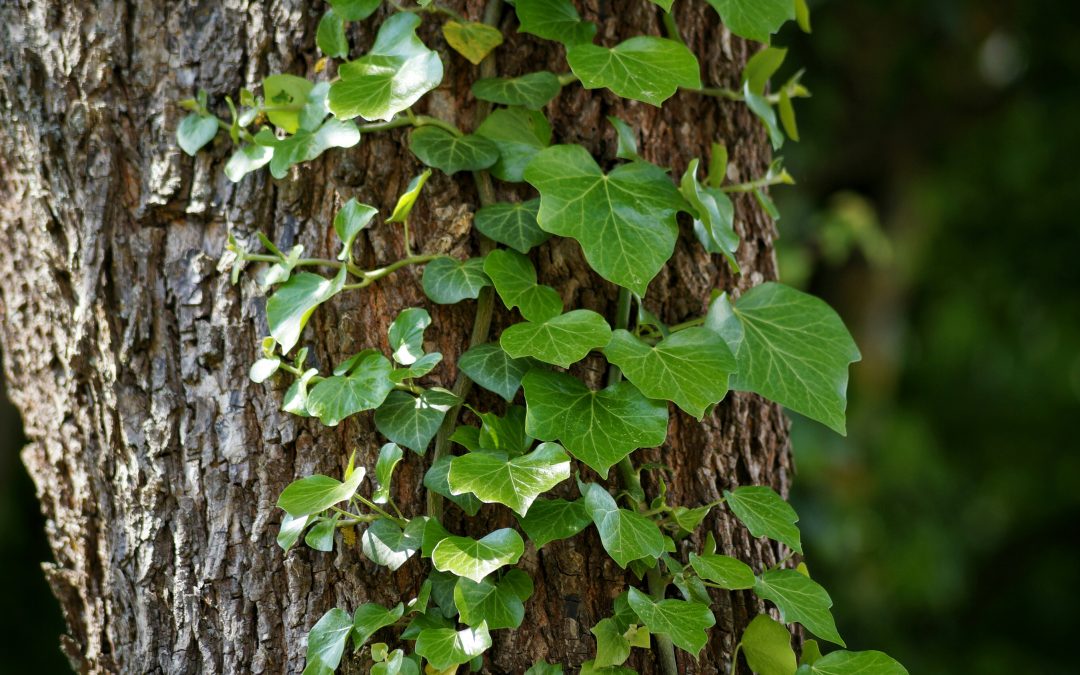Ivy is a fast-growing climbing plant that can quickly cover the trunk and branches of a tree. While ivy can provide some benefits, such as shading the trunk from the sun and trapping moisture, it can also kill trees. Ivy absorbs water and nutrients from the tree, which can damage the tree’s bark and stunt its growth. In addition, the weight of the ivy can cause branches to break, and the plant’s dense network of roots can damage the tree’s root system. As a result, it’s important to be careful when planting ivy near trees and to monitor the plant carefully to make sure it isn’t causing any damage. If you see signs of stress in the tree, such as yellowing leaves or dieback, it’s important to remove the ivy to prevent further damage.
Will Ivy Kill My Tree?
We all see ivy growing up trees from the ground cover below. You’ve undoubtedly seen it growing up the sides of buildings, too. Clients often ask “will ivy growing up a tree kill it?”
Structural Damage
The short answer is yes, eventually.
Ivy damages the bark as it climbs. Ivy will eventually overtake even a mature tree. As ivy climbs, it weakens branches through its weight and prevents light from penetrating the leaves. Weakened plants and trees are more susceptible to problems like pests or disease.
Think about it this way; trees are adapted to certain conditions. They’re able to handle stresses from drought, wind, and snow – you get the picture. When you add a lot of extra weight to those very precisely adapted branches, and then it snows, the tree is unprepared. Also, the ivy steals nutrients that the tree would have been able to use. Lastly, the ivy can root into the tree and steal the vital carbohydrates and moisture that pass up and down through the tree.
What do I do about it?
A particularly tricky thing to do is to remove ivy from trees. It is best to remove the ivy from the tree and keep it away from the trunk of the tree. Ideally, you want to get it about 3 to 4 feet away to prevent it from climbing up the tree again. If it has a head start or is considerably up the tree, removes as much as you can without harming the bark. Once you have created a tree ring at least 3-4 feet, this is a good time to create a mulch ring. This allows you to see the ivy growing over the mulch, making it manageable. I would refrain from spraying non-selective herbicides around the base of the tree, as you can get uptake and harm the tree.
Start with a pair of loppers, hand pruners or a hand saw depending on the thickness of the vine. Cut it, and start gently pulling it off the tree. Most often, any ivy up the tree will die off in dry weather. If the roots are firmly hooked into the bark and pulling the plant off will also remove some of the bark, stop! You may damage the tree, so it’s time for “Plan B.”
Starting at the base of the tree, cut an inch or two sections out of the ivy stem and remove it. Carefully paint the cuts on the still attached stem with full strength Round-Up. Repeat the process every few feet up the stem of the ivy as high as you can reach. You may need to repeat this a few times before you fully kill the ivy.

